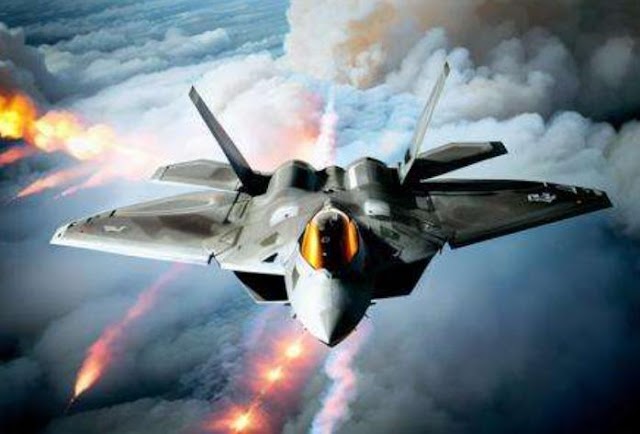Mil Mi-8: A Journey Through Time and Innovation
The Mil Mi-8, known by its NATO reporting name "Hip" stands as a testament to Soviet ingenuity, designed in the 1960s and formally introduced into the Soviet Air Force in 1968. This medium twin-turbine helicopter has since become a global icon, not only serving as a reliable transport helicopter but also finding roles in diverse capacities, including as an airborne command post, armed gunship, and reconnaissance platform.
 |
| Mi-8 Helicopter |
Role: Transport helicopter (also several armed versions)
National origin: Soviet Union/Russia
Manufacturer: Kazan Helicopter Plant
Design group: Mil Moscow Helicopter Plant
First flight: 7 July 1961
Status: In service
Primary users: Soviet Union
Produced: 1961–present
Number built: >17,000 and production continues today; world's most-produced helicopter
Variants: Mil Mi-8M/Mi-17
Developed into: Mil Mi-14
Crew: 3 (pilot, copilot, flight engineer)
Capacity: 24 passengers or 12 stretchers and seat for 1 medical attendant or 4,000 kg (8,800 lb) on internal/external hardpoints
Length: 18.4 m (60 ft 4 in)
Height: 5.5 m (18 ft 1 in)
Empty weight: 7,100 kg (15,653 lb)
Gross weight: 11,100 kg (24,471 lb)
Max takeoff weight: 13,000 kg (28,660 lb)
Fuel capacity: 3,700 L (980 US gal; 810 imp gal)
Powerplant: 2 × Klimov TV3-117MT turboshaft engines, 1,454 kW (1,950 hp) each
Main rotor diameter: 21.29 m (69 ft 10 in)
Main rotor area: 356 m2 (3,830 sq ft) *Blade section: NACA 23012[66]
Maximum speed: 250 km/h (160 mph, 130 kn)
Cruise speed: 240 km/h (150 mph, 130 kn)
Range: 495 km (308 mi, 267 nmi)
Ferry range: 960 km (600 mi, 520 nmi)
Service ceiling: 5,000 m (16,000 ft)
Armament:
4,000 kg (8,818 lb) of disposable stores on six hardpoints, including 57 mm S-5 rockets, bombs, or 9M17 Phalanga ATGMs and one or two side-mounted PK machine guns
Historical Context:
Genesis of the Mi-8:
The Mil Mi-8 traces its origins to 1959 when Mikhail Mil proposed a revolutionary two-engined turbine helicopter to the Soviet government. Initially met with resistance due to contentment with the existing Mi-4, Mil successfully portrayed the new helicopter as an upgraded version with advanced turbine engines, securing approval for production.
Prototype Development:
The prototype, named V-8, took flight in June 1961, showcasing a larger cabin and powered by a Soloviev AI-24 turboshaft engine. Khrushchev's visit to the U.S. in 1959, where he was impressed by a similar helicopter, played a pivotal role in steering Soviet authorities towards the development of their own.
Key Features and Specification:
Design Innovations:
Mil's ingenious approach allowed for a redesign of the entire front half of the aircraft around a single engine, showcasing the adaptability of the helicopter. The fifth prototype, designed for mass production, incorporated changes such as a five-blade rotor to reduce vibration, solidifying the Mi-8's status as an engineering marvel.
Powerful Performance:
The Isotov TV2 engines, purpose-built for the Mi-8, marked a historic moment in Soviet aviation, providing the helicopter with reliable and efficient power. The dual-engine configuration ensured both reliability and enhanced performance.
Mass Production and Global Impact:
Mass production commenced in 1965 at the Kazan Production Plant, with over 17,000 units built to date. The Mi-8, along with its more powerful counterpart, the Mi-17, ranks among the world's most-produced helicopters, serving over 50 countries. As of 2015, they stand as the third most common operational military aircraft globally.
Legacy and Continued Service:
Versatility in Roles:
Beyond its primary role as a transport helicopter, the Mi-8 has adapted to various roles, showcasing its versatility and continued relevance in modern military operations.
Global Presence:
With a presence in over 80 countries, the Mi-8's enduring legacy is a testament to its reliability, adaptability, and enduring design.
Conclusion:
In conclusion, the Mil Mi-8's journey from conceptualization to mass production showcases the resilience and adaptability of this iconic helicopter. Its impact on global aviation and military operations is immeasurable, standing as a symbol of Soviet engineering prowess and innovation.
FAQs - Unraveling More about the Mi-8
1. Q: What makes the Mi-8 unique among helicopters?
- Ans: The Mi-8's uniqueness lies in its versatile design, allowing it to serve as a transport helicopter, airborne command post, gunship, and reconnaissance platform.
2. Q: Who played a crucial role in the development of the Mi-8?
- Ans: Mikhail Mil, the visionary Soviet engineer, proposed and led the development of the Mi-8.
3. Q: How did Khrushchev's visit to the U.S. influence the Mi-8's development?
- Ans: Impressed by a U.S. presidential helicopter, Khrushchev ordered the creation of a similar Soviet version, leading to the development of the Mi-8.
4. Q: What role did Isotov engines play in the Mi-8's history?
- Ans: The Isotov TV2 engines, purpose-built for the Mi-8, marked a significant milestone, providing the helicopter with reliable and efficient power.
5. Q: How has the Mi-8 left its mark on global military aviation?
- Ans: The Mi-8's widespread use in over 80 countries cements its status as one of the most common operational military aircraft globally.










.jpeg)
0 Comments
If you have any doubts. Please let me know. I would be happy for your kind suggestion.